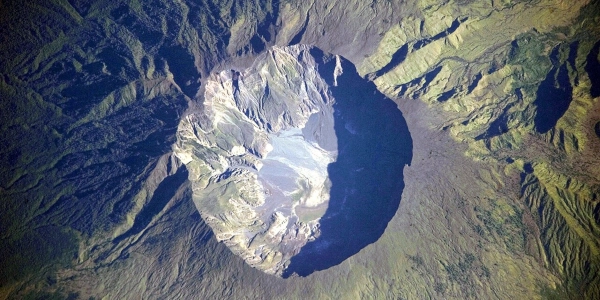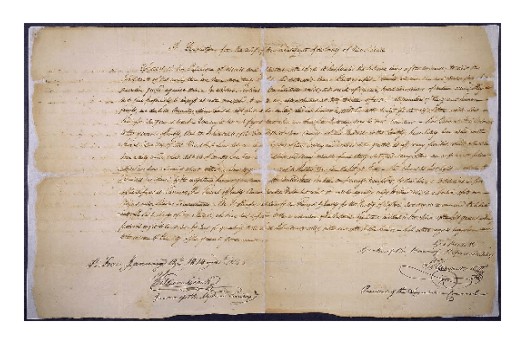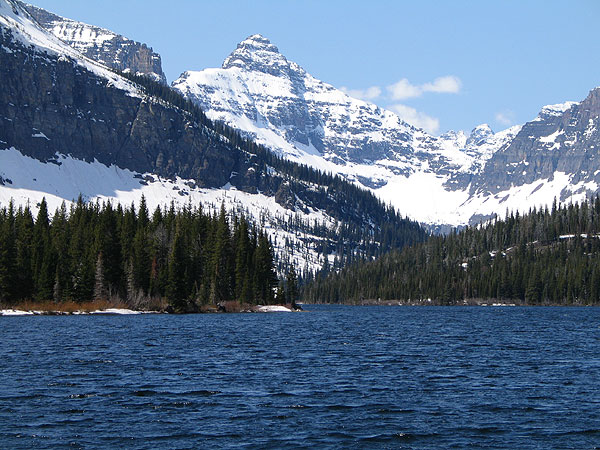Sponsor this page. Your banner or text ad can fill the space above.
Click here to Sponsor the page and how to reserve your ad.
-
Timeline
1815 - Detail
April 10, 1815 - The Mount Tambora volcano erupted in Indonesia, causing unprecedented climate change across the USA and world, leading to the entire "Year without a Summer" in 1916.

Article by Jason Donovan
There are places on earth that feature sleeping giants with immense power and
capacity for destruction, a bringer of death. One such giant is located in the island nation of
Indonesia. In 1815 Mount Tambora would show that its previous rumblings should not have
been ignored. Tambora unleashed effects that killed thousands at first and millions over the
next few years. Nature often reminds us that despite our propinquity in thinking, we have
mastery over our world, and that world shows how fragile we are in the face of the natural
world.
Mount Tambora was an imposing figure on the island of Sumbawa, which lies within the
Lesser Sunda Islands in southern Indonesia. Before the eruption, the island was an exporter of
many things, including horses and rice. The crafter of this fertile land was also its destroyer due
to Sumbawa being at the crossroads in the lucrative trade occurring in items such as spices.
As a result of the chaos caused by the Napoleonic War, the country administering Indonesia
changed hands multiple times throughout the early 1800s. The colonial administration was not
very interested in studying the area. The first time the area was the center of scientific study
would only come in 1847 via biologist Heinrich Zollinger. Consequently, this lack of study
leaves little information on the area around the volcano pre-eruption. The war played a pivotal
part in the reaction to the lead-up to and during the eruption.
At the time of the eruption, Indonesia was under British control. The Dutch initially
colonized Indonesia as part of the Dutch East Indies. The eruption happened as the
Napoleonic War was winding down, and as a result of the Dutch being invaded by the French,
the Dutch East Indies were first under French control and then taken over by the British. The
war made the response to the booms of the eruption to be thought of as canon fire. Ships were
sent out to investigate, but nothing was found. Eventually, an expedition was sent to the
volcano to investigate, but they were not seen again.
Mt. Tambora had given signals that trouble might be coming, starting roughly three
years before the main eruption. There had been explosions and smoke coming from the
mountain and also tremors that occurred with increasing frequency. On 5 April 1815,
intensifying explosions were heard coming from the volcano. No one could have foreseen what
was about to unfold. Terror was only a few days away.
On 10 April, the mountain awoke with apocalyptic fury. Three columns of fire reached
into the sky. The top of the mountain, 36 cubic miles of terra firma, was now particles in the
stratosphere. The eruption set off hurricane-force winds that devastated the surrounding area.
A local leader, the Rajah of Saugar, gave a personal account of the eruption, as relaid in a
ThoughtCo article by Robert McNamara from 2019. The article states that ash began falling
around nine to ten in the evening following, shortly after a “violent whirlwind” toppled almost
every structure in Saugar. The Rajah continues by saying that the areas that abutted the
mountain received the most violent winds, which ripped up “by the roots, the largest trees and
carrying them into the air together with men, houses, cattle, and whatever else came within its
influence. This will account for the immense number of floating trees seen at sea.”
Lastly, the Rajah speaks of the tsunami that ensued, saying, “The sea rose nearly twelve feet higher than it had ever been known to be before, and
completely spoiled the only small spots of rice lands in Saugar, sweeping away houses and
every thing within its reach.”
Reach of the Eruption
Tambora’s effects reached out to its neighbors in other ways with pumas stones six
inches in diameter. These large chunks of the mountain killed many in their own homes when
roofs caved in under the weight of said rocks. The terror was still unfolding on Sumbawa.
While the eruption started around 7 pm, sometime after 10 pm, hell came riding down
the mountain in the form of pyroclastic flows. Pyroclastic flows are fast-moving waves of
volcanic material that form as the volcanic plume collapses and sends volcanic material,
including boulders of rock and superheated gas, down the slopes of the mountain at speeds of
up to 200m per second. The gases within the cloud can reach temperatures of 1300 degrees
Fahrenheit.
Another eruption where the pyroclastic flows wiped out two towns was the eruption of
Mount Vesuvius in 79AD. Vesuvius produced pyroclastic flows that show the true effects of the
flows on the human body. Excavations have shown that the victim’s blood boiled, causing their
heads to explode. In recent research, there is evidence of some victims having signs of their
brains turning to glass. Excavations also show that at Pompeii and Herculaneum, another
nearby town, people sought shelter in houses and other structures. Many perished when the
roofs of those structures gave way under the weight of the ash and pumice stones crushing
those inside and entombing them under feet of ash.
With similar conditions having transpired over the course of the eruption of Mount
Tambora as did in the eruption of Mount Vesuvius, it is very possible that Tambora’s victims
have been preserved by similar means, entombed, leaving open cavities preserving victims in
the poses in which they died. The main difference between the two today is in terms of the
excavation of each site. Unlike Pompeii and Herculaneum, the area around Tambora is encased
in 12 feet of ejected material. The deaths on the island of Sumbawa were just the beginning.
As the Rajah stated above, a 12-foot, but other reports say a 15-foot tsunami crashed
into the nearby islands after lava flows smashed into the ocean. This wave washed away all in
its path. The tsunami was not the only hazard in or on the water; all the ash and pumice stones
were floating on top of the water. In a Scientific American article entitled “Tambora Erupts in
1815 and Cannes World History [Excerpt]” cites a first-hand account of what the area looked
like just a few days after the eruption,
“A Malaysian ship from Timor sailing through the region also found itself in “utter darkness” on
11 April. As it passed by Tambora, the commander saw that the lower part of the mountain was
still in flames. Landing farther down the coast to search for freshwater, he found the ground
“covered with ashes to the depth of three feet,” and many of the inhabitants dead. When the
ship departed on a strong westward current, it had to zigzag through a mass of cinders
floating on the sea, more than a foot thick and several miles across.”
Tremors and aftershocks caused another tsunami, which came out of the early morning
darkness on the east side of Java. The water and the land brought death and suffering, but
death was just getting started as a shroud of a thick ash cloud descended over the land.
Tambora’s ash cloud reached Gresik, 400 miles to the west on the island of Java, on 11
April. An eyewitness report of a European who was in Surakarta, a small village, who saw,
“a tremulous motion of the earth, distinctly indicated by the tremor of large window frames;
another comparatively violent explosion occurred late in the afternoon.… The atmosphere
appeared to be loaded with a thick vapour: the Sun was rarely visible, and only at short
intervals appearing very obscurely behind a semitransparent substance.” Surakarta remained
in darkness for much of the following day, as well.”
Another such account comes from Java’s lieutenant-governor Thomas Stamford Bingly Raffles,
who described that even though he was 800 miles away, “showers of ashes covered the
houses, the streets, and the fields to the depth of several inches; and amid this darkness,
explosions were heard at intervals, like the report of artillery or the noise of distant thunder.”
On 17 April, the air finally cleared as a rainstorm came through the area. The rain
washed off any surviving vegetation, saving some crops and providing a small but crucial
amount of clean drinking water. With food in short supply, people spread far and wide,
abandoning villages. The aftermath weakened the residents of Sumbawa and surrounding
islands with starvation and disease. Death stretched its hands over the land, carrying off
humans and animals just the same.
The crew of the ship Benares reported that as of 19 April, when they arrived in Bima,
the city’s harbor, once one of the best and most beautiful in Asia, was now a wasteland. The
water was thick with pumice stones and splintered tree trunks. The darkness, suffering,
starvation, and obliteration of society in Asia were only the beginning.

The Year Without a Summer
The cloud spawned by the horrors of Tambora would carry away many souls worldwide
over the coming years. Bestowing in the year 1816 the moniker “The Year Without a Summer”
or “Eighteen Hundred and Frozen To Death.” Tambora spewed out a cloud containing 60 megatons of sulfur gas on top of all the ash. This combination created a veil of death, the sulfur
reflects while the ash blocks sunlight from reaching the ground. Irregular weather patterns
caused unseasonable conditions such as frost at least once a month throughout the year and
severe drought. These irregularities wrought havoc on the lives of, arguably, nearly every being
on earth.
The veil circled the equatorial regions within roughly two weeks, taking eight to twelve
weeks to cover the poles, heavily affecting the northeast of the United States. The state of
Vermont was hit hard, losing ten percent of its population in a westward migration in a
desperate attempt to outrun death. The United States was not the only country reeling from
Tambora’s cloud.
Examples of the worldwide impact hit India by interrupting the predictability of the
area’s monsoon rains. Due to the abnormal amount of wet conditions a novel strain of cholera
was birthed around the Bay of Bengal. Europe was racked by famine after heavy rains. Ireland,
for example, received a straight eight weeks of continuous rain, resulting in crops rotting in the
fields. While in China, “The Great Yunnan Famine” after three consecutive crop failures, people
were desperate. Their desperation was so great that sources of the time, and there are many,
speak of murder-suicides and people eating clay. Mount Tambora may have killed around
100,000 persons in the immediate area. Still, millions more around the world would pass due to
the climatological aftershocks.
Mount Tambora’s eruption was a turning point for humanity, still affecting us today.
Unfortunately, death and suffering were a continuing theme of this piece. A similar eruption is
still possible today. What would we do today? One likes to think that our technology would
save us. The effects of such an event on society are often overlooked. Let us all hope that we
will not be the ones to have to live through such an event.
Image above: Image of the impact of the Mount Tambora Explosion, 2003, NASA/Nikr. Courtesy Wikipedia Commons C.C. 3.0. Image below: Mount Tambora Caldera, 2009, NASA. Courtesy NASA and Wikipedia Commons. Source Info: Tambora: The Narrative | the 1815 Eruption of Mount Tambora – Stephen Boe; Primary Source Analysis: Cartoons of 1816 | the 1815 Eruption of Mount Tambora – Stephen
Boe; Statistico. “U.S.: Sulfur Dioxide Emissions, by Year | Statistico.” Statistico, 7 Apr. 2024; Malik, Vishul. “April 10 1815 - Mount Tambora in Indonesia
Begins Erupting.”; MapsofWorld.com, 2 Dec. 2022l; Klemetti, Erik. “194 Years since the Great Tambora Eruption.” WIRED, 10 Apr. 2009; “Held’s History of Sumbawa : An Annotated Translation / Gerrit Jan Held, Author; Hans Hägerdal [Translator].” Wellcome Collection, 2024; “Sumbawa | Island, Indonesia | Britannica.” Encyclopædia Britannica, 2019; Huntington, Ray, and David Whitchurch. “Eighteen Hundred and Froze to Death”: Mount
Tambora, New England Weather, and the Joseph Smith Family in 1816; “Learn about the 19th Century’s Largest Volcanic Eruption.” ThoughtCo, 2019; “1815: Two Hundred Years Ago One of the Most Powerful Volcano
Eruptions Took Place at Tambora, Indonesia | History.info.” History.info, 9 Apr.
2020; Mount. “Facts-Chology.” Facts-Chology, 21 Sept. 2022; Volcano Hazards Program. “Pyroclastic Flows Move Fast and Destroy Everything in
Their Path | U.S. Geological Survey.”; Andrews, Robin. “This Is How a Volcano’s Pyroclastic Flow Will Kill You.” Forbes, 12 Oct.
2022; Jashemski, Wilhelmina. “Pompeii | Facts, Map, & Ruins.” Encyclopædia Britannica, 29
Oct. 2018; Klingaman, William K. “Tambora Erupts in 1815 and Changes World History
[Excerpt].” Scientific American, Mar. 2013; “Mount Tambora and the Year without a Summer.” DIG, 14 May 2018.





